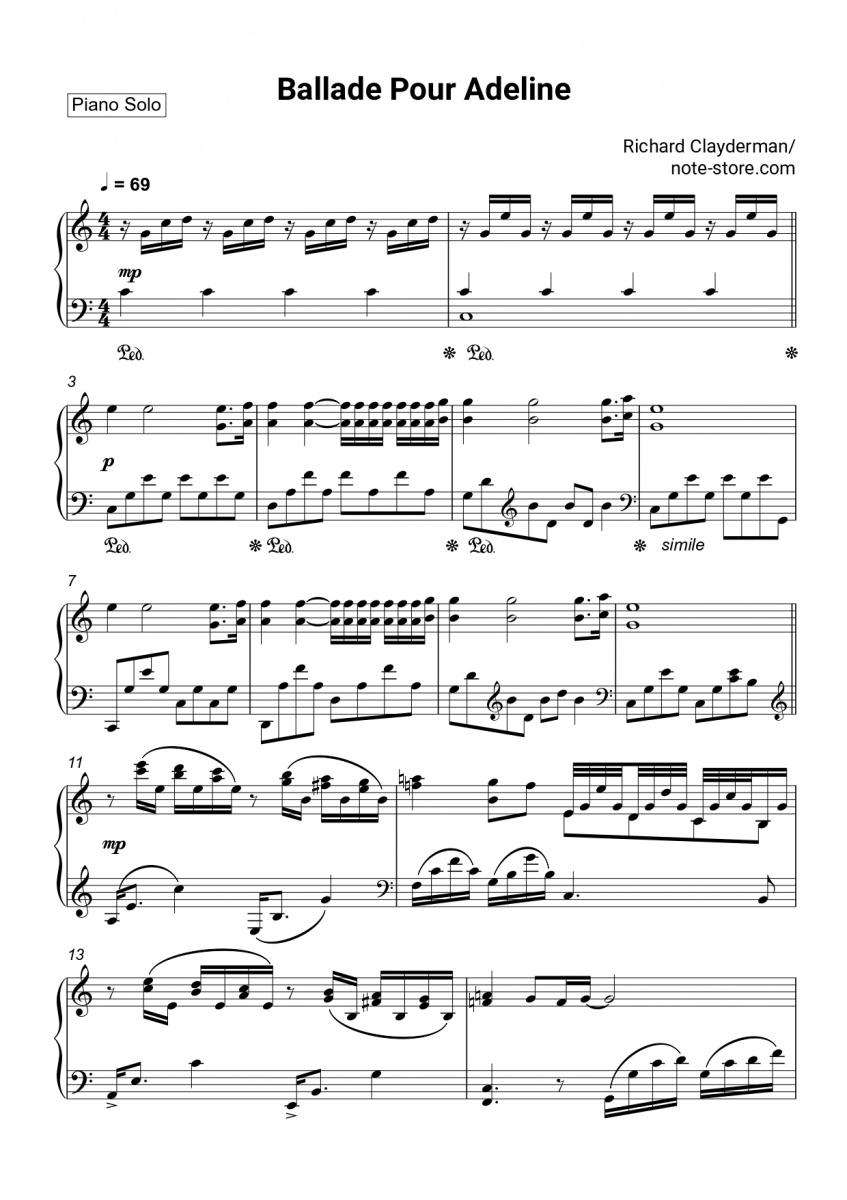

Ballade pour Adeline was used as the demo song for the Casio CT-650, a keyboard manufactured by Casio in 1989.this "octave in the right hand" phenomenon extends for the whole of A' here. the E in bar 3 was omitted and in bar 17 replaced by G. The range of G has also expended to include more notes and add volume to C. The difference in its dynamics from p to ff as well as bring an octave higher than in A. The melody is accompanied by alternate accent on G and D in the left hand. It moved 3 octaves progressively within 2 bars and moved from G to G.
Music ballade pour adeline full#
Finally, the direction of the piece swings upwards into a full swing. This E-D-C-B phrase seems to be a little "extra" as the melody then goes back to E and continued with its original rate of movement downwards. In bar 12, the descending tone is "quicken" as we can see a rapid decrease E-D-C-B in the right hand. Furthermore, it seems to be anticipating a climax. It creates direction both in the piece as well as in the phrase. In bar 11, it starts from F and makes it way down by step. In B again, the dreamy effect is emphasized with the introduction of the semiquavers.
Music ballade pour adeline series#
To a certain extent the series of eight semiquavers may sound juxtaposing to the smooth/sweet mood created in the piece. Again, here the composer used semiquavers to add in different styles. Here the composer used the change in dynamics to emphasize the difference between antecedent and consequent phrase. The piece starts off sweetly with (I-IV-V7-I)x2. Lastly, the usage of semiquavers in the introduction quickens the pace of the piece, making it smooth and flow-like. The crescendo and decrescendo contribute to the contour of the piece. The introduction mainly uses arpeggios to create the water imagery.

The 23-year-old Philippe Pagès was auditioned along with 20 other hopefuls and, to his amazement, he got the job. Paul had composed this ballad as a tribute to his new born second daughter “Adeline”. In 1976, Richard Clayderman (real name Philippe Pagès) received a telephone call from Olivier Toussaint, a well-known French record producer, who, with his partner, Paul de Senneville, was looking for a pianist to record a gentle piano ballad. This recording also used the same backing track.Ī new version of this piece was released on the Richard Clayderman studio album A Thousand Winds in 2007, to celebrate 30 years since the original release of "Ballade Pour Adeline." Clayderman was accompanied by a new string arrangement by Olivier Toussaint. Richard Clayderman performed a duet of the track with guitarist Francis Goya in 1999, and it was released on their studio album, Together. The French trumpeter Jean-Claude Borelly recorded his version in the early 1980s, which used the same instrumental backing track as the original recording. Worldwide sales of the recording have now reached 22 million copies in 38 countries. Paul de Senneville composed the piece as a tribute to his newborn daughter, Adeline. " Ballade pour Adeline" ( French for "Ballad for Adeline") is a 1977 instrumental by Richard Clayderman, composed by Paul de Senneville. "Ballade pour Adeline ( Sonate pour Piano et Orchestre)" 1977 single by Richard Clayderman "Ballade pour Adeline"


 0 kommentar(er)
0 kommentar(er)
